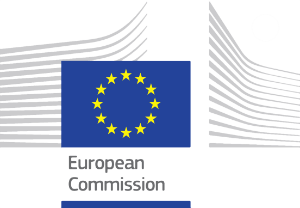The 5 Senses Open-air Museum of Sciacca in Sicily (Italy) is a project aimed at creating a collaborative network engaging local communities and public administrations to make the historic city and its surroundings an unforgettable cultural tourism experience, relying on Sciacca’s uniqueness: people and the “beautiness” of the place where they live. During this period with millions of jobs at risk because of the pandemic crisis covid19, especially in the tourism sector, the 5 Senses Open-air Museum turns out to offer a governance model which can strongly help communities recover from the crisis both socially and economically, in a sustainable and responsible way. Small shops, craftsmen, accommodations, local products restaurants, institutions, work together in Sciacca to develop the territory and connecting it with buyers, consumers and influencers alike in the cultural heritage and tourism industries to generate value added markets centred on authentic cultural experience and local identity. This inclusive and bottom-up tourism innovation project has been implemented in only 2 years, generating a community network with more than 50 engagement agreements signed with all the trade categories, public institutions and volunteers’ associations, over 18 “care of hospitality” specifications signed with the accommodations, as many bar, restaurants, craftsman involved and over 50 experiences ready for tourists.
A big community engaged to build its future. This is done through an innovative, inclusive and responsible GOVERNANCE that:
- manages the process transforming local good and services into tourist products;
- ensures quality;
- provides a constant monitoring of impacts with the necessary measures whenever necessary;
- generates better income opportunities for ALL.
Moreover, since people and identities (meaning the historical/artistic/cultural heritage of the area where they live) are ready-to-be-valorised resources in whatever country/region/territory, the project offers an innovative and replicable method ready to scale-up and to be implemented everywhere in Europe and internationally. The 5 Senses Open-air Museum of Sciacca was selected in 2021 as a best practice within the Community of Innovators in circular and human-centred cultural tourism within the Horizon 2020 Be.CULTOUR project (www.becultour.eu). The project implementation is led by the Community Cooperative “Identity and Beauty”, which includes all actors interested to enhance the “hidden treasures” of Sciacca placing people, beauty and cultural identity / heritage at the centre of the development strategy. The approach adopted in Sciacca became rapidly known and turned an abandoned and underused cultural heritage area into a place of new attractiveness, vibrancy, and culturally interesting area for both visitors and residents, generating new jobs, learning and training opportunities for all, and especially regenerating trust and hope (in a period of dramatic crisis, globally).
The Method implemented is a 3-phase process which guides communities from awareness to quality product and services’ delivery for tourism based on their territory identity and beauty:
• AWARENESS of the heritage available but not yet enhanced;
• COMPETENCE in transforming resources into social, cultural, environmental, economic, human value;
• CONNECTIONS in the territories, so essential today, to create synergies for a development that will last over time Our Vision is a community engaged in a sustainable and responsible development of its territory. An engaged-community is able to guarantee viable long-term economic operations, providing socioeconomic benefits to all stakeholders that are fairly distributed, including stable employment and income-earning opportunities, and contributing to equality and poverty alleviation.
Our Mission is to guide communities to move from a condition of fragmentation and limited integration between supply and demand in tourist and cultural services to a cooperative, participated and inclusive network ecosystem. The overall outcome is that the whole community grows and develops in a horizontal, sustainable, responsible, and circular way.
HORIZONTAL ECONOMY: inside the 5 Senses Open-air Museum, with a horizontal structure, the stakeholders are the whole community, the governance is the expression of the engaged residents, investments are shared and the revenues immediately distributed among all the community individuals.
CIRCULAR ECONOMY: inside the 5 Senses Open-air Museum the economy is “circular” because the project creates a skilled-people network who take, transform and reuse resources from the area where they live into tourist products without waste.
RESPONSIBLE TOURISM: The strong networking the 5 Senses Open-air Museum in based on is the best guarantee of responsible tourism. This is because the impact on local populations, on the social system and on the identity balance is not influenced by external elements but by the engaged community.
SUSTAINABLE TOURISM: the whole structure of the 5 Senses Open-air Museum is genetically built on sustainability at three levels.
A) Respect for the environment as a fundamental strategic resource that must last over time.
B) Controlled use of the land’s products by respectful tourism
C) Ethics and profit are no longer in conflict and we can combine humans and nature’s needs in a harmonious way, guaranteeing long-term economic sustainability for the whole community.
The project innovative part is both about process and tools. From a process point of view, the project aims to foster a successful tourism innovation and entrepreneurial ecosystem by connecting all stakeholders, the “engaged community”, to collaboration opportunities and prioritizing capacity building in tourism and cultural services. In order to achieve this strategic target, we have developed: - an innovative Governance Model for the actions and resource management and control; templates and disciplinary agreements to help the community be engaged and get higher quality standards; - an innovative tool called the Identity Business Model Canvas (IBMC) to facilitate the collaborative action among the different categories and to enable the creation of a Business Model whose stakeholders are not the members of a single company but the citizens of an entire community and which Core Business is the Storytelling of the historical/artistic/cultural heritage of the area.
This museum won the 1st prize in the 2022 ECTN Awards, also in the framework of ReInHerit Horizon 2020 CSA, with Europa Nostra and European Travel Commission.

